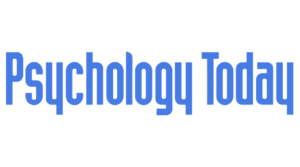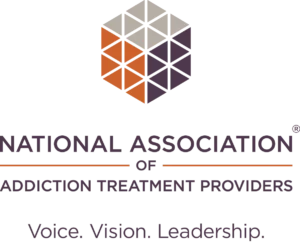

Table of Contents
Although known as neurotherapy, neurobiofeedback, biofeedback, and EEG, targeted neurofeedback is a type of therapy that monitors brainwave activities using electrodes attached to the scalp. This output is recorded via a sound or video display.
Neurofeedback aims to control activity to target issues of a dysfunctional brain. If the brain activity changes direction to produce the desired result, the therapist provides positive feedback to the patient. If the desired result is not produced, the therapist responds with negative feedback or no feedback. Rewards can be anything from a change in the therapist’s tone to a character’s movement on a screen.
Targeted neurofeedback is instrumental in treating several conditions associated with a dysfunctional brain including ADD, bipolar disorder, anxiety and depression, addiction, PTSD, OCD…and the list goes on.
What is Neurofeedback?
Neurofeedback is based on a variety of images collected by the therapist. The images can be based on the structure, function, or pharmacology of the brain. Structural imaging looks at the structure of the brain and can be useful in diagnosing intracranial diseases and injuries.
Functional brain neuroimaging looks at the function of the brain to diagnose and provide detailed insight into neurological dysfunction such as metabolic diseases and lesions. It plays a key role in neurological and psychological research. It provides a visual display of brain activity lighting up the scan every time brain metabolism increases.
Types of Neuroimaging
There are several types of neuroimaging used in today’s medical industry but here are some of the most common.
Electroencephalography (EEG)
EEG involves placing electrodes on the patient’s face and scalp. The frequency and form of the EEG signals are measured to show brain activity in various psychological states. It is useful in diagnosing seizures and other medical conditions that may result from overactivity in the brain. QEEG is the analysis of the digitized EEG. It is also known as brain mapping.
Positron Emission Tomography (PET)
Active neurons use glucose for energy. PET scans measure glucose in the brain to determine when neurons are firing. Visible spots are created and picked up by detectors to produce an image of the brain performing certain tasks.
Magnetic Resonance Imaging (MRI) and Functional Magnetic Resonance Imaging (fMRI)
MRI and fMRI’s use magnetic fields to align spinning atomic nuclei located in body tissues. The fields interfere with the rotation to determine the radio frequency generated as the nuclei returns to a nonactive state. This process allows the MRI to produce an image of the structure of the brain. fMRI’s are like MRI’s but MRI’s capture anatomical structure while fMRI’s take images of metabolic structure within the anatomy.
SMR Training
Sensorimotor rhythm or SMR Training has been known to improve the dysfunctional brain by boosting memory and cognitive performance. An SMR is a brain wave that may produce variances in electronic or magnetic fields. Training sessions are used to increase or decrease these rhythms to allow patients to control symptoms of a dysfunctional brain. EEG is commonly used in SMR therapy although other forms of neuroimaging may be integrated as well.
ADHD
SMR training has been known to help treat neurological dysfunctional brain conditions and it is especially helpful in controlling symptoms of ADHD. 1 ADHD medications often cause side effects that make them a poor choice for long-term use. They may result in symptom remission as well.
SMR training is a drug-free treatment alternative that is a better long-term option. It has been shown to reduce impulsivity and improve concentration. Some patients have been able to discontinue medications when using this therapy.
Alpha Training
Alpha power is a function that varies with the performance of creativity-related tasks in the brain. It increases during the creative process, and it can be measured by EEG and other neuroimaging methods.
Alpha training provides patients with real-time feedback of their alpha power via a tone or visual signal. Studies have shown that patients that engage in alpha training may be able to enhance their alpha activity.
Anxiety
Alpha training has shown to be effective in the treatment of dysfunctional brain conditions, but it is especially useful in reducing anxiety symptoms. Studies have shown that high anxiety subjects who learn to increase their EEG alpha above their resting states can lower their anxiety levels. Alpha training is a drug-free treatment that does not cause side effects and encourages optimal brain performance.2
Other forms of Neurofeedback
Frontal Stabilization
Frontal stabilization uses EEG to determine resting brain states and measure alpha asymmetry in the frontal part of the brain. It can be used to learn about a patient’s underlying emotions and motivations.
Depression
Frontal stabilization can be used to treat various types of neurological dysfunction, but it is most effective in reducing depression. Scientists are proposing that FAA (frontal alpha asymmetry) may be a biomarker of depressive disorder.
Studies revealed that women treated for depression showed little changes in FAA. However, more research is needed to determine whether frontal stabilization can be used to make a breakthrough.
Deep Relaxation
Meditation has been shown to effective in treating symptoms of a dysfunctional brain. Studies reveal that neurofeedback via EEG can be used to increase self-regulation working as an aide to meditation.4
Neurofeedback is often used to treat dysfunctional brain conditions such as insomnia, depression, and brain damage. These are the same conditions that may improve through regular meditation. Both methods are known to boost concentration and emotional regulation and attention span.
Therefore, it should come as no surprise that many neurofeedback companies are integrating mediation in their practices to provide patients with optimal brain performance.
J. Flowers is Your Source for Improving Functional Brain Activity
Mental health issues can be detrimental to your personal and professional life and may be the underlying cause of addiction. J. Flowers takes a comprehensive approach to improve functional brain activity with programs that boost mental health and wellness and treat substance use disorders.
We offer a variety of treatments like detoxification, wellness and restoration, continuing care, and groups for adolescents and young adults. Our evaluations include neuropsychological and brain mapping with a major emphasis on targeted neurofeedback. We believe in getting to the root of the problem to find the most effective solutions.
Do not let mental health get in the way of your ability to enjoy life. Contact J. Flowers to find out how we can help you move forward. Then look forward to leaving neurological dysfunction behind.









